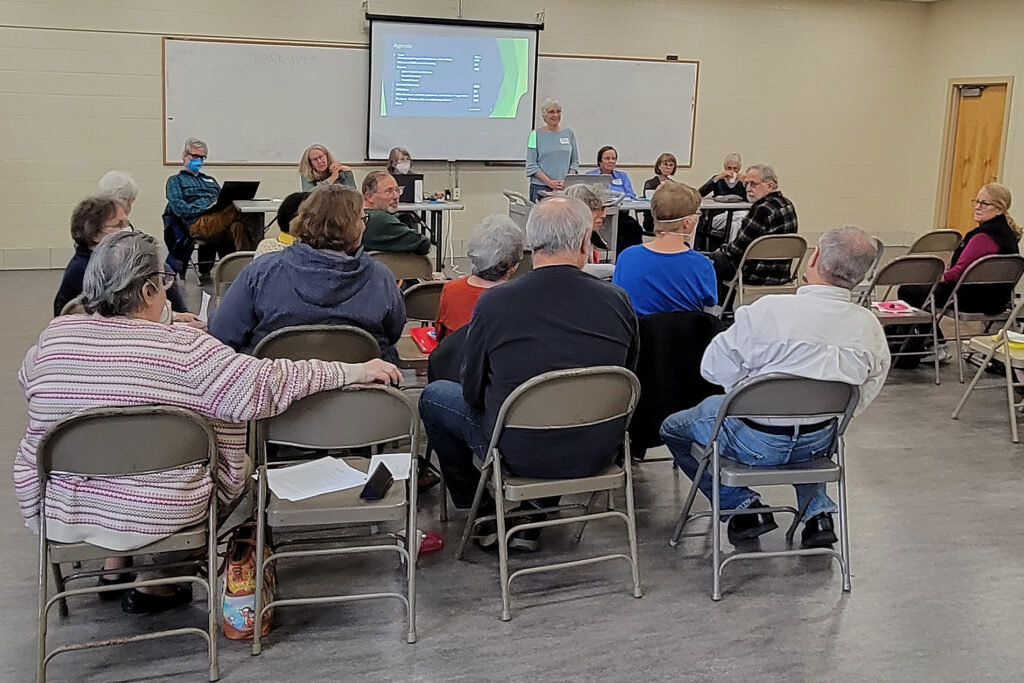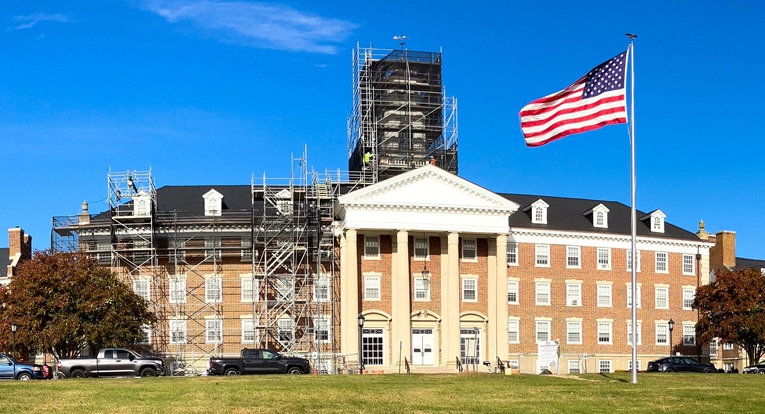In this third episode of our Co-op Month story, the largest co-op in Greenbelt (or at least the one with the most square-footage) and the only worker cooperative get their share of the limelight.
Greenbelt Homes, Inc.
GHI is a large cooperative housing organization (though dwarfed in size by the 35-building, 15,000-family behemoth in the Bronx, New York City). Operating as Greenbelt Homes, Inc., the cooperative is run by an elected board and numerous committees. It comprises around 1,600 dwellings with a mix of apartments, row houses and a few stand-alone houses.
The cooperative was formed when the federal government decided to get out of the rental business and, in 1952, divested itself of the three New Deal towns originally built in the late 1930s. Greenbelt residents formed a cooperative to purchase the homes – though it was a very divisive period that caused some residents to leave. Hindsight indicates that it was an excellent decision: the rules of the cooperative are helping to support and stabilize an affordable housing community which has remained in good shape, even as the other towns did less well. The sale, though, was fraught with other consequences, as the land around the original city was in some cases sold off to developers – a fact that has come back to haunt the pioneers’ descendants.
During the 1980s, and provoked to some extent by rapidly rising oil prices affecting the costs of running an antiquated heating system, GHI initiated a controversial refurbishment of the property, with a similar if less radical makeover in the last several years. This has helped retain the viability of what might otherwise have disintegrated.
Today, its homes continue to retain their value while still being affordable. Now, though the homes are more often inhabited by older residents and retirees and its playgrounds are no longer teeming with the children of the 1930s and 1940s, it remains a vibrant and valid community.
Greenbelt News Review
Last in the list but not in the collective heart, is this newspaper, originally the Greenbelt Cooperator. It is Greenbelt’s only worker cooperative. When first registered as a business in the District of Columbia in 1941, four years after its inception, and long before GHI came into being, the original filing stated that it was a nonprofit cooperative. Maryland has no similar designation, which is perhaps why the News Review remains registered in D.C. to this day.
Why a Cooperative?
There are some advantages to being organized as a worker cooperative, apart from democratic spirit. Because all the members are owners, they don’t have to be paid minimum wage when they work – or in fact anything at all if the paper makes no money. Profits (if any) are distributed as dividends to the members or used for community purposes. If the News Review had to pay even minimum wage to all its staff, it would go belly-up in no time flat. In fact, over half today’s members decline their dividends (which work out to around a princely $2.50 per hour or less). Members are semi-volunteers. The inescapable costs of the paper include printing, layout, rent to the city for the office, insurance against being sued for libel or other legal liabilities and the office supplies (which include a generous allowance for candy, a major office perk).
The newspaper is funded almost completely from its advertising revenue and thanks the businesses and nonprofits for their continuing investment. Over the years, when there has been some money to spare, the News Review has contributed additionally to the city and beyond.
Community Contribution
In addition to almost-inadvertently documenting the history of the city as it happens in real time, the News Review has also contributed to its everyday culture and wellbeing. Its carriers learn a work ethic, its members enjoy a sense of wellbeing and fulfillment, its institutions have transparency to the population they serve and residents (within limits) have a voice on its letters page.
The newspaper also sponsored the 2018 production by Greenbelter Susan Gervasi of the film Defending Utopia (available online and in the Co-op Grocery Store) which documented the role the newspaper has played during the city’s lifetime. And, of course, the singular victory in the 1970 Supreme Court decision upholding freedom of speech.
The Challenges
As a newspaper, it continues to face challenges and overcome them. The overall decline of community newspapers nationally is also a threat to the News Review as people look to the internet for news. But the internet is global in its reach – not on Greenbelt’s scale – and its content often of dubious provenance. The Greenbelt News Review will continue to buck this trend as long as it can and its organization as a cooperative allows the community to participate in sustaining it. Perhaps the newspaper is not the vital means of communication it was in 1938, but it remains an enduring symbol of community life and consciousness – and it will be a sad day for the city if it disappears.




